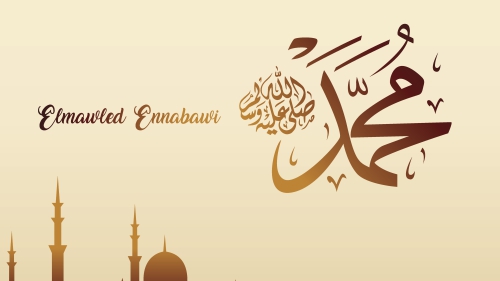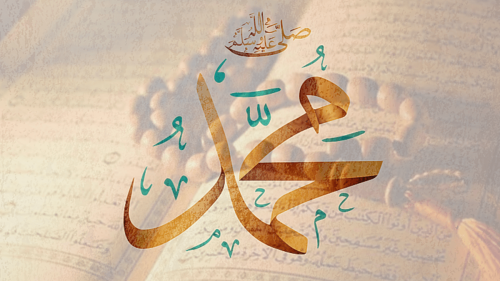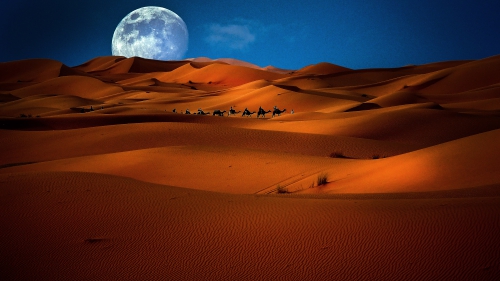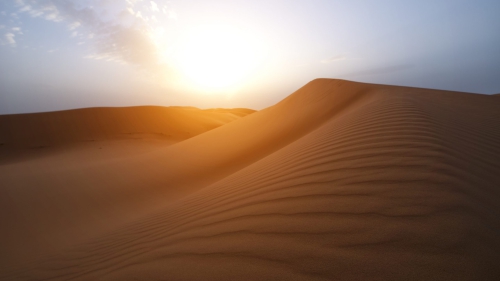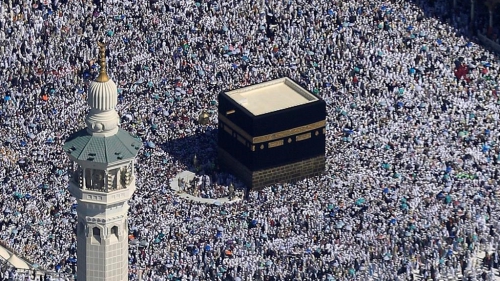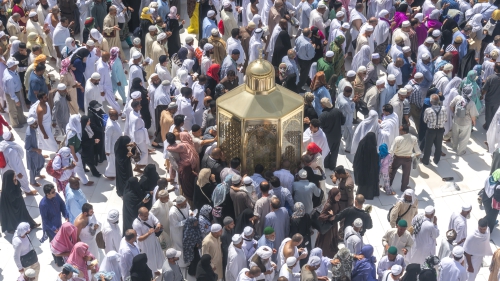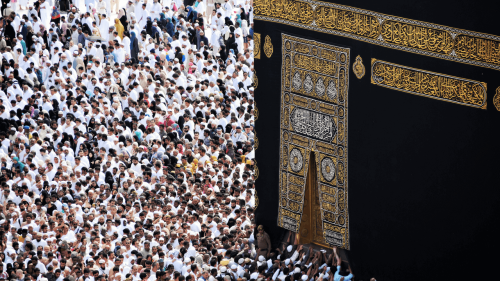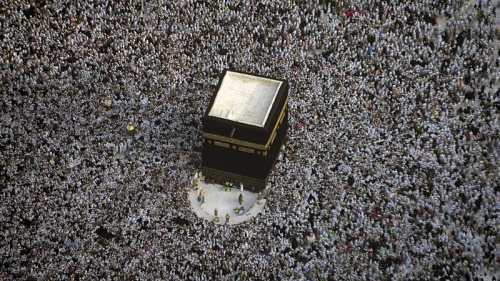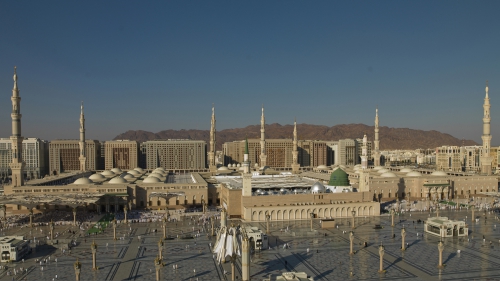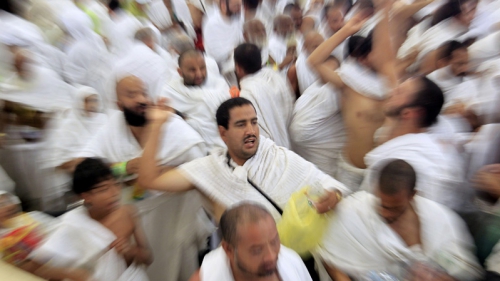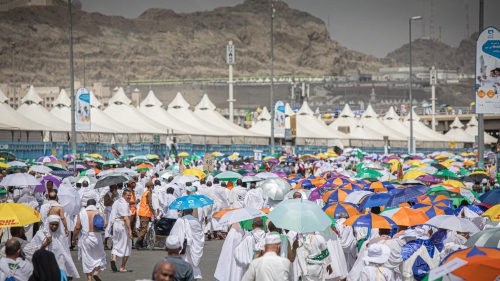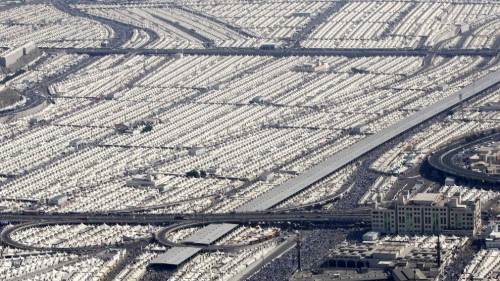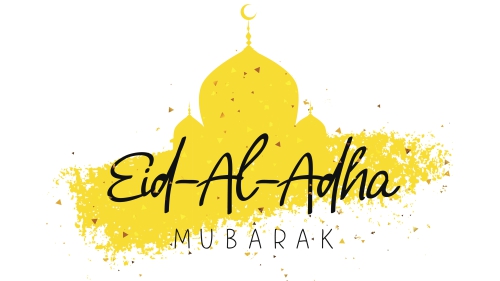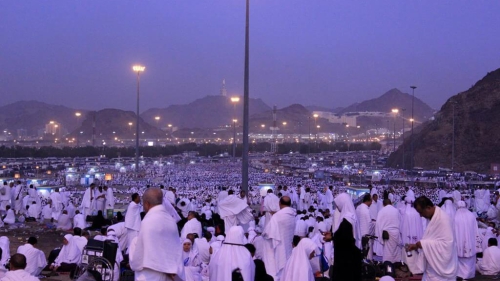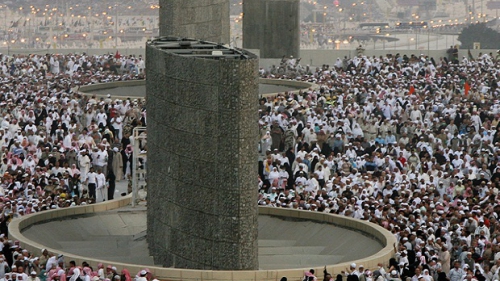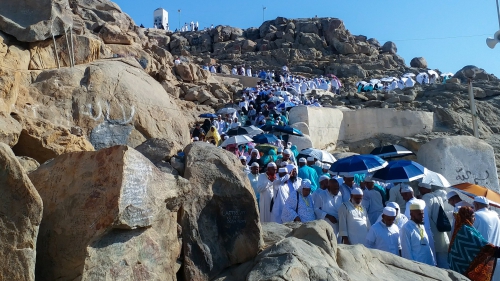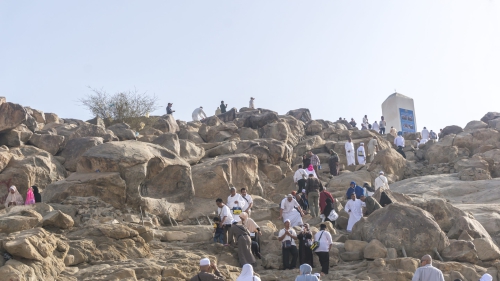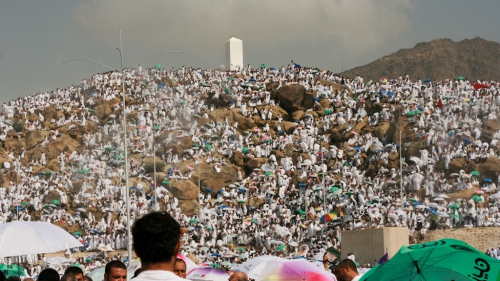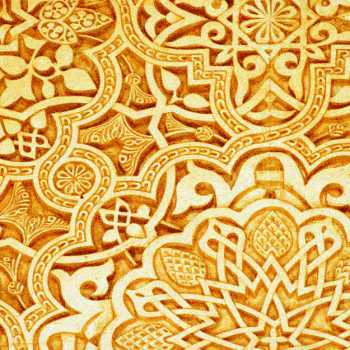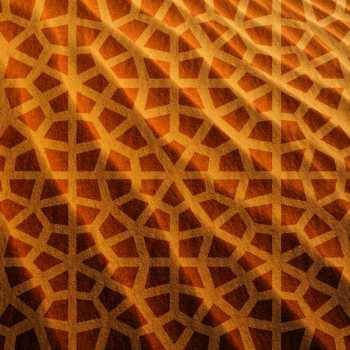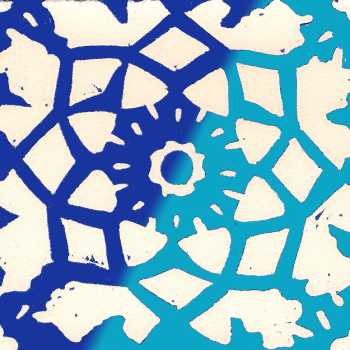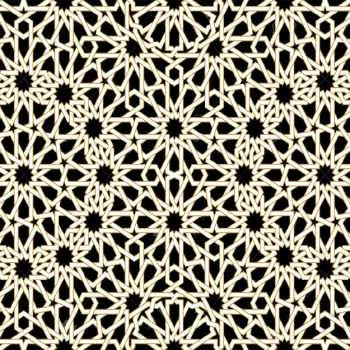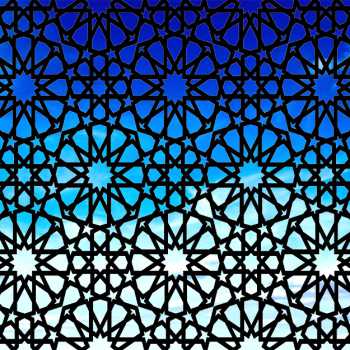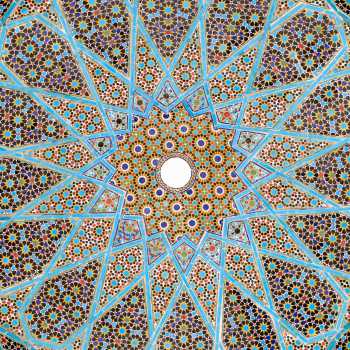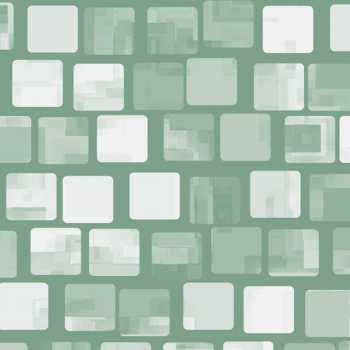
‘Whoever performs Hajj and does not commit sin, nor disputes unjustly (during Hajj), then he returns from Hajj as pure and free from sins as on the day on which his mother gave birth to him’ (Al-Bukhari and Muslim).
Hajj, or pilgrimage, is one of the five pillars of Islam and represents a significant spiritual journey for Muslims. It is an obligatory act of worship that every Muslim who is physically and financially able must perform at least once in their lifetime. The pilgrimage takes place annually during the Islamic month of Dhul-Hijjah in the holy city of Mecca, Saudi Arabia.
Key aspects of Hajj include:
1. Obligation and Timing: Hajj is a once-in-a-lifetime obligation for Muslims who meet the necessary physical and financial criteria. The pilgrimage occurs during specific days of the month of Dhul-Hijjah, culminating in the Day of Arafah, which is considered the most important day of the Hajj rituals.
2. Rituals and Practices: The Hajj consists of a series of rituals that are performed over several days. These include:
- Ihram: Pilgrims enter a state of spiritual purity and wear simple white garments, symbolizing equality and unity among all participants, regardless of social status or nationality.
- Tawaf: Pilgrims circumambulate the Kaaba, the sacred structure in the Masjid al-Haram, seven times in a counter-clockwise direction.
- Sa'i: Pilgrims perform the Sa'i, which involves walking seven times between the hills of Safa and Marwah, commemorating Hagar's search for water for her son Ishmael.
- Standing at Arafat: On the Day of Arafah, pilgrims gather at the plain of Arafat to pray and seek forgiveness, reflecting on the Day of Judgment.
- Muzdalifah and Mina: After Arafat, pilgrims spend the night at Muzdalifah and then return to Mina, where they perform the ritual of stoning the devil by throwing pebbles at three pillars, symbolizing the rejection of evil
. - Eid al-Adha: The pilgrimage concludes with the celebration of Eid al-Adha, where pilgrims sacrifice an animal, commemorating the willingness of Prophet Abraham to sacrifice his son in obedience to God.
3. Spiritual Significance: Hajj is not only a physical journey but also a profound spiritual experience. It serves as an opportunity for Muslims to seek forgiveness for their sins, renew their faith, and develop a deeper connection with God. The pilgrimage is believed to bring about a transformation, allowing individuals to return home "as a newly born baby" free of sins.
4. Unity and Diversity: Hajj brings together millions of Muslims from diverse backgrounds, cultures, and nationalities, fostering a sense of unity and brotherhood among the global Muslim community. This gathering emphasizes the equality of all believers before God, as they stand together in worship.
Hajj is a fundamental act of worship in Islam that encompasses a series of rituals aimed at fostering spiritual growth, community, and a deeper understanding of one's faith. It is a unique opportunity for Muslims to fulfill their religious obligations while experiencing the profound significance of their beliefs.
Some Hajj Facts:
- Hajj is one of the largest religious gatherings in the world.
- Two to five million people from around the globe convene to affirm their commitment to God and commemorate the example and sacrifice of Prophet Abraham.
- Hajj is one of the five pillars of Islam. Most Muslims perform it at least once in their lives. However, Hajj is not mandatory unlike the other four pillars, because of the hardships of the ritual. So, Islam has taken into consideration both the financial and physical ability of the individual, regarding the performance of Hajj.
- The rites of Hajj are performed from the 8th to the 12th of Dul Hijjah.
- Eid Al-Adha falls on the 10th day of the month of Due Hijjah.
- All male pilgrims wear the same simple attire, which consists of two white clothes that cover the body called Ihram. Women wear a simple abaya; but they have their heads covered with their faces showing. The simple dress is a symbol of purity and equality.
- Hajj is a journey into self-reflection and personality development. It’s an experience that allows the person to live the brotherhood and sisterhood of humanity. It is a journey for learning the art of sacrifice; allowing pilgrims to connect with the divine.
HAJJ STEP BY STEP
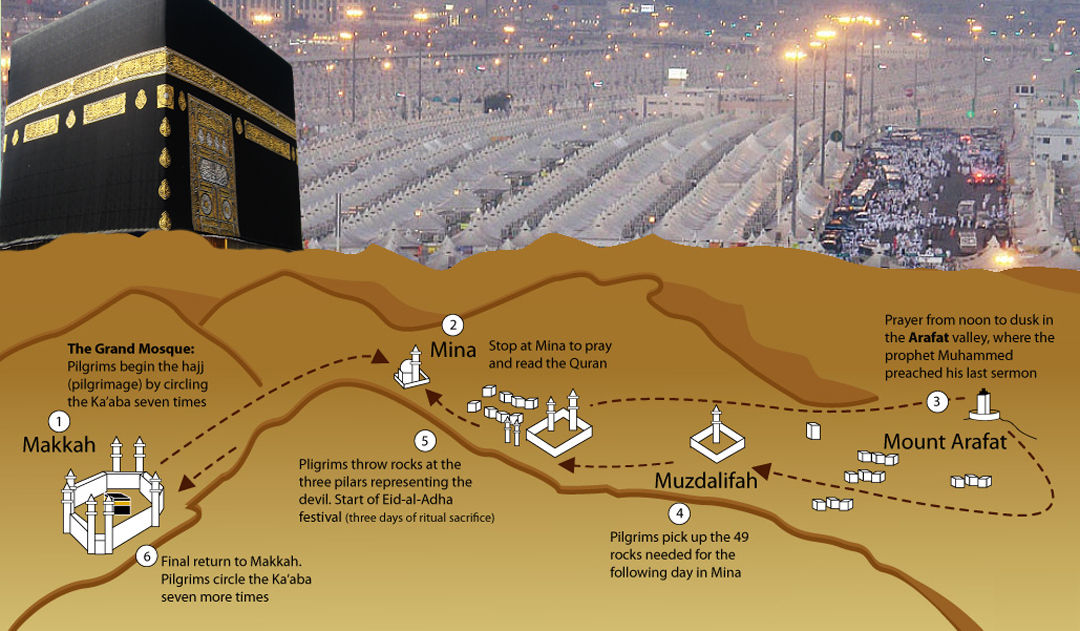
Day 1
Prelude
Before the 8th of Dhul-Hijjah, a person who wants to perform pilgrimage (Hajj) pronounces the intention to perform Umrah while approaching the Miqat. A second intention for the actual Hajj is pronounced at a later period. There are several rites to properly complete the Hajj and Umrah.
The rites of Umrah and Hajj may include but are not limited to: Putting Ihram, performing supererogatory (Sunnah) prayers, making several types of Tawaf, reciting Talbiyah, doing Sa’ee between Safa and Marwah, trimming and/or cutting hair, praying and staying in Mina, praying and standing in Arafah, praying and staying in Muzdalifah, throwing pebbles in three Jamrahs, sacrificing an animal, praying behind Maqam Ibrahim, and drinking from the well of ZamZam.
In the case of Hajj at-Tamattu, after completing the Umrah, the pilgrim trims his/her hair, showers, and changes into everyday clothes. These steps complete the Umrah portion. All restrictions of the Ihram are temporarily lifted. The pilgrim waits until the 8th of Dhul-Hijjah to start the rites of Hajj.
On the 8th of Dhul-Hijjah, the pilgrim pronounces a new niyyah at the place to perform Hajj. There is no need to go to Miqat for this. The pilgrim changes into Ihram in the prescribed manner and proceeds to Mina soon after the Fajr Prayers.
Proclaiming the Niyyah for Hajj
Niyyah: “O Allah! I intend to perform Hajj. Make it easy for me and accept it from me. I make the niyyah for Hajj and enter into the state of Ihram for the sake of Allah alone, the Most High.”
اللَّهُمَّ إِنِّيْ أُرِيْدُ الْحَجَّ فَيَسِّرْهُ لِيْ وَتَقَبَّلْهُ مِنِّيْ
Putting on Ihram After Fajr
The distinctive garb of the male pilgrim is worn during Hajj or Umrah. It consists of two pieces of white, un-sewn and plain cloth. One of the pieces is wrapped around the midriff to cover his body from just above his navel to his ankles, and the other is draped around his shoulders to cover the upper body. For ladies, their ordinary and unpretentious clothes of everyday wear constitute their Ihram. Its purpose is to demonstrate universality, totality and humility of the pilgrim.
During Ihram, the following acts are forbidden: Cutting hair, shaving any parts of the body, clipping nails, putting perfumes or colognes, killing or hunting animals, sexual intercourse, making marriage proposals, or marriage contracts.
Praying 2 Rak'at Nafl At Miqat
Miqat is an imaginary boundary around Makkah. A prospective pilgrim cannot cross this boundary without first changing into Ihram. The pilgrim changes into Ihram at Miqat and pronounces the intention to perform Hajj or Umrah.
The Miqat boundary is anchored by different townships and locations in different directions around the Kaabah. They are:
a) Dhu al-Hulayfah in the North
b) Yalamlam in the South-East
c) Dhāt 'Irq in the North-East
d) Al-Juhfah in the North-West
e) Qarn al-Manazil in the East.
For people living inside the Miqat area permanently, their place of residence is their Miqat.
Making Tawaf
The devotional act of circumambulating (i.e. walking around) the Ka'bah while reciting prayers and supplications. One complete circuit around the Ka'bah constitutes a shawt (pl. ashwat), and seven ashwat complete one Tawaf. During Tawaf (circumambulating), the pilgrim cannot enter the Ka'bah nor stop anywhere around it.
Performing Sa'ee
Sa'ee is the devotional act of walking seven times between the knolls of Safa and Marwah. This act retraces the footsteps of Hajar, wife of Prophet Ibrahim (pbuh), during her desperate search for water for her infant son Ismail (pbuh) after they were left in the desert by Prophet Ibrahim in response to a Divine vision. Safa:
A small knoll approximately 200 yards from the Ka'bah inside the Masjid Al-Haram
Marwah:
A small knoll (i.e., hillock) located approximately one hundred and fifty yards from the Ka'bah.
Reciting Talbiya
A devotional recital of the following words by the pilgrims during Hajj and Umrah.
لَبَّيْكَ ٱللَّٰهُمَّ لَبَّيْكَ، لَبَّيْكَ لَا شَرِيكَ لَكَ لَبَّيْكَ، إِنَّ ٱلْحَمْدَ وَٱلنِّعْمَةَ لَكَ وَٱلْمُلْكَ لَا شَرِيكَ لَكَ Labbaik Allahumma Labbaik. Labbaik La Sharika Laka Labbaik. Innal-Hamda, Wan-Ni'mata Laka wal-Mulk. La Sharika Lak.
Here I am at Thy service O Lord, here I am, Here I am at Thy service and Thou hast no partner. Thine alone is all Praise and All Bounty, and Thine alone is the Sovereignty. Thou hast no partner.
The Talbiyah is a prayer as well as an assertion of the pilgrim's conviction that he/she intends to perform Hajj only for the glory of Allah. The pilgrim starts the recital upon changing into the Ihram, and continues to recite it frequently throughout Hajj. Male pilgrims are required to recite the Talbiyah loudly whereas female pilgrims are required to recite it in low voice.
Going to Mina
The Pilgrim goes to Mina on the 8th of Thul-Hijjah anytime after Fajr prayer but before Zuhr.
Mina is a desert location approximately three miles from Makkah where several Hajj rites are performed.
Praying in Mina
The pilgrim must perform the daily prayers in Mina starting with Zuhur Prayer. Prayers are shortened from 4 to 2 Rakahs but not combined.
Staying Overnight in Mina
The pilgrim must stay overnight in Mina, perform the Fajr prayer and leave after sunrise on the 9th of Thul-Hijjah.
Prayer upon Departing from Mina:
O Allah! To You I turn, praying to approach Your Bounteous Countenance. Let my sins be forgiven and Hajj be acceptable, and have Mercy on me. Allow me not to be disappointed, for You have power over all things.
Completion of the First Day.
This completes the first Day of Hajj, also known as the Day of Tarwiyah.
Before the 8th of Dhul-Hijjah, a person who wants to perform pilgrimage (Hajj) pronounces the intention to perform Umrah while approaching the Miqat. A second intention for the actual Hajj is pronounced at a later period. There are several rites to properly complete the Hajj and Umrah.
The rites of Umrah and Hajj may include but are not limited to: Putting Ihram, performing supererogatory (Sunnah) prayers, making several types of Tawaf, reciting Talbiyah, doing Sa’ee between Safa and Marwah, trimming and/or cutting hair, praying and staying in Mina, praying and standing in Arafah, praying and staying in Muzdalifah, throwing pebbles in three Jamrahs, sacrificing an animal, praying behind Maqam Ibrahim, and drinking from the well of ZamZam.
In the case of Hajj at-Tamattu, after completing the Umrah, the pilgrim trims his/her hair, showers, and changes into everyday clothes. These steps complete the Umrah portion. All restrictions of the Ihram are temporarily lifted. The pilgrim waits until the 8th of Dhul-Hijjah to start the rites of Hajj.
On the 8th of Dhul-Hijjah, the pilgrim pronounces a new niyyah at the place to perform Hajj. There is no need to go to Miqat for this. The pilgrim changes into Ihram in the prescribed manner and proceeds to Mina soon after the Fajr Prayers.
Proclaiming the Niyyah for Hajj
Niyyah: “O Allah! I intend to perform Hajj. Make it easy for me and accept it from me. I make the niyyah for Hajj and enter into the state of Ihram for the sake of Allah alone, the Most High.”
Putting on Ihram After Fajr
The distinctive garb of the male pilgrim is worn during Hajj or Umrah. It consists of two pieces of white, un-sewn and plain cloth. One of the pieces is wrapped around the midriff to cover his body from just above his navel to his ankles, and the other is draped around his shoulders to cover the upper body. For ladies, their ordinary and unpretentious clothes of everyday wear constitute their Ihram. Its purpose is to demonstrate universality, totality and humility of the pilgrim.
During Ihram, the following acts are forbidden: Cutting hair, shaving any parts of the body, clipping nails, putting perfumes or colognes, killing or hunting animals, sexual intercourse, making marriage proposals, or marriage contracts.
Praying 2 Rak'at Nafl At Miqat
Miqat is an imaginary boundary around Makkah. A prospective pilgrim cannot cross this boundary without first changing into Ihram. The pilgrim changes into Ihram at Miqat and pronounces the intention to perform Hajj or Umrah.
The Miqat boundary is anchored by different townships and locations in different directions around the Kaabah. They are:
a) Dhu al-Hulayfah in the North
b) Yalamlam in the South-East
c) Dhāt 'Irq in the North-East
d) Al-Juhfah in the North-West
e) Qarn al-Manazil in the East.
For people living inside the Miqat area permanently, their place of residence is their Miqat.
Making Tawaf
The devotional act of circumambulating (i.e. walking around) the Ka'bah while reciting prayers and supplications. One complete circuit around the Ka'bah constitutes a shawt (pl. ashwat), and seven ashwat complete one Tawaf. During Tawaf (circumambulating), the pilgrim cannot enter the Ka'bah nor stop anywhere around it.
Performing Sa'ee
Sa'ee is the devotional act of walking seven times between the knolls of Safa and Marwah. This act retraces the footsteps of Hajar, wife of Prophet Ibrahim (pbuh), during her desperate search for water for her infant son Ismail (pbuh) after they were left in the desert by Prophet Ibrahim in response to a Divine vision. Safa:
A small knoll approximately 200 yards from the Ka'bah inside the Masjid Al-Haram
Marwah:
A small knoll (i.e., hillock) located approximately one hundred and fifty yards from the Ka'bah.
Reciting Talbiya
A devotional recital of the following words by the pilgrims during Hajj and Umrah.
لَبَّيْكَ ٱللَّٰهُمَّ لَبَّيْكَ، لَبَّيْكَ لَا شَرِيكَ لَكَ لَبَّيْكَ، إِنَّ ٱلْحَمْدَ وَٱلنِّعْمَةَ لَكَ وَٱلْمُلْكَ لَا شَرِيكَ لَكَ Labbaik Allahumma Labbaik. Labbaik La Sharika Laka Labbaik. Innal-Hamda, Wan-Ni'mata Laka wal-Mulk. La Sharika Lak.
Here I am at Thy service O Lord, here I am, Here I am at Thy service and Thou hast no partner. Thine alone is all Praise and All Bounty, and Thine alone is the Sovereignty. Thou hast no partner.
The Talbiyah is a prayer as well as an assertion of the pilgrim's conviction that he/she intends to perform Hajj only for the glory of Allah. The pilgrim starts the recital upon changing into the Ihram, and continues to recite it frequently throughout Hajj. Male pilgrims are required to recite the Talbiyah loudly whereas female pilgrims are required to recite it in low voice.
Going to Mina
The Pilgrim goes to Mina on the 8th of Thul-Hijjah anytime after Fajr prayer but before Zuhr.
Mina is a desert location approximately three miles from Makkah where several Hajj rites are performed.
Praying in Mina
The pilgrim must perform the daily prayers in Mina starting with Zuhur Prayer. Prayers are shortened from 4 to 2 Rakahs but not combined.
Staying Overnight in Mina
The pilgrim must stay overnight in Mina, perform the Fajr prayer and leave after sunrise on the 9th of Thul-Hijjah.
Prayer upon Departing from Mina:
O Allah! To You I turn, praying to approach Your Bounteous Countenance. Let my sins be forgiven and Hajj be acceptable, and have Mercy on me. Allow me not to be disappointed, for You have power over all things.
Completion of the First Day.
This completes the first Day of Hajj, also known as the Day of Tarwiyah.
Day 2
Going to Arafah
After leaving Mina, the pilgrim heads toward Arafah.
Arafah is a desert location approximately nine miles from Makkah. Pilgrims don't have to get crowded on the Mount of Rahmah (Mountain of Mercy). They can stay in any place within the boundaries of Arafah..
Prayer Upon Entering Arafah:
O Allah! Forgive my sins, help me repent to you, and grant me all that I beseech of You. Whenever I turn, let me see goodness. Allah be praised! All Praise is due to Allah! There is no deity except Allah! And Allah is The Most Great.
Praying in Arafah
After settling down in the tents at Arafah, the pilgrim offers the Zuhur and Asr prayers in qasr (shortened from 4 to 2 rakah) and Jam' (combined), with one adhan and two separate Iqamahs.
Once in Arafah, the pilgrim should spend as much time in prayer and remembrance of Allah as possible. This is a very special day and the pilgrim may never see it again. Everyone must make the most out of it. No Nafl or any other prayers are performed, either before or after the obligatory prayers.
Staying in Arafah
The pilgrim stays in Arafah until sunset. It is recommended to spend the entire time reading the Quran, reciting the Talbiyah, offering supplications, and repenting to Allah.
Standing in Arafah:
In the late afternoon just before sunset, the pilgrims may stand outside the tent facing the Qiblah, and raise their hands, supplicating to Allah. There are no prescribed prayers for Wuquf (standing) in Arafah. During these sacred moments, the pilgrim is alone with Allah, praying to have his/her sins and lifelong shortcomings get forgiven. Communication with Allah in any language is acceptable.
Leaving for Muzdalifah
After sunset, the pilgrim departs for Muzdalifah quietly, always reciting the Talbiyah and other prayers.
Muzdalifah is a desert location approximately midway between Mina and Arafah. The pilgrim spends the night of the 10th of Thul-Hijjah here.
Offering Prayers in Muzdalifah
The pilgrim offers Maghrib and Isha prayers combining them and shortening the Isha. Thus, after the adhan is called, three rak'ahs of Maghrib are offered following the usual iqamah. Another iqamah (but not adhan) is called and then two rak'ahs of Isha are offered.
The pilgrim stays under the sky at Muzdalifah. No tents or other lodging facilities are available.
Collecting Pebbles
The pilgrim then walks to the foot of nearby hills, and collects about 70 pea-size pebbles for throwing.
The pebbles lying around the bathrooms facilities should not be collected. No one should leave Muzdalifah before Fajr without a legitimate excuse: only women, elderly, and weak people can leave after midnight.
Completion of Second Day
The pilgrim spends the night at Muzdalifah and offers Fajr there. Before sunrise, the pilgrim leaves for Mina on the morning of the 10th of Thul-Hijjah.
After Fajr prayer, the pilgrim goes through the al-Mash'ar al-Haram and makes du'a until the brightness of the sun is widespread. The pilgrim must speed up the walk when passing by the Muhasir valley.
After leaving Mina, the pilgrim heads toward Arafah.
Arafah is a desert location approximately nine miles from Makkah. Pilgrims don't have to get crowded on the Mount of Rahmah (Mountain of Mercy). They can stay in any place within the boundaries of Arafah..
Prayer Upon Entering Arafah:
O Allah! Forgive my sins, help me repent to you, and grant me all that I beseech of You. Whenever I turn, let me see goodness. Allah be praised! All Praise is due to Allah! There is no deity except Allah! And Allah is The Most Great.
Praying in Arafah
After settling down in the tents at Arafah, the pilgrim offers the Zuhur and Asr prayers in qasr (shortened from 4 to 2 rakah) and Jam' (combined), with one adhan and two separate Iqamahs.
Once in Arafah, the pilgrim should spend as much time in prayer and remembrance of Allah as possible. This is a very special day and the pilgrim may never see it again. Everyone must make the most out of it. No Nafl or any other prayers are performed, either before or after the obligatory prayers.
Staying in Arafah
The pilgrim stays in Arafah until sunset. It is recommended to spend the entire time reading the Quran, reciting the Talbiyah, offering supplications, and repenting to Allah.
Standing in Arafah:
In the late afternoon just before sunset, the pilgrims may stand outside the tent facing the Qiblah, and raise their hands, supplicating to Allah. There are no prescribed prayers for Wuquf (standing) in Arafah. During these sacred moments, the pilgrim is alone with Allah, praying to have his/her sins and lifelong shortcomings get forgiven. Communication with Allah in any language is acceptable.
Leaving for Muzdalifah
After sunset, the pilgrim departs for Muzdalifah quietly, always reciting the Talbiyah and other prayers.
Muzdalifah is a desert location approximately midway between Mina and Arafah. The pilgrim spends the night of the 10th of Thul-Hijjah here.
Offering Prayers in Muzdalifah
The pilgrim offers Maghrib and Isha prayers combining them and shortening the Isha. Thus, after the adhan is called, three rak'ahs of Maghrib are offered following the usual iqamah. Another iqamah (but not adhan) is called and then two rak'ahs of Isha are offered.
The pilgrim stays under the sky at Muzdalifah. No tents or other lodging facilities are available.
Collecting Pebbles
The pilgrim then walks to the foot of nearby hills, and collects about 70 pea-size pebbles for throwing.
The pebbles lying around the bathrooms facilities should not be collected. No one should leave Muzdalifah before Fajr without a legitimate excuse: only women, elderly, and weak people can leave after midnight.
Completion of Second Day
The pilgrim spends the night at Muzdalifah and offers Fajr there. Before sunrise, the pilgrim leaves for Mina on the morning of the 10th of Thul-Hijjah.
After Fajr prayer, the pilgrim goes through the al-Mash'ar al-Haram and makes du'a until the brightness of the sun is widespread. The pilgrim must speed up the walk when passing by the Muhasir valley.
Day 3
Going to Mina
Pilgrims head to Mina to throw the stones at the Jumurah. Weak and sick people can appoint others to throw stones on their behalf.
Throwing Pebbles
The pilgrim stones the Jamrat al-Kubra (Jamrat al-Aqabah) only, preferably before midday. Stoning the pillar symbolizes stoning the devil. The pebbles must touch the inside of the Jamrat's fence.
The Jamrat al-Kubra is the closest to Makkah. While throwing the stones, the pilgrim recites Bismillah, Allah-u-Akbar with each pebble.
Sacrificing an Animal
A sacrifice is now required for the pilgrim performing Hajj al-Tamattu or Hajj al-Qiran. The choice of the animal is either a sheep, or 1/7th of a cow or a camel shared with other people.
As For the pilgrim performing Hajj al-Ifrad, sacrificing the animal is recommended but not required. One third of the meat can be consumed, one third offered as a gift and one third distributed to the poor people. The sacrifice can be performed between the 10th and the 13th of Thul-Hijjah but not after the 13th.
Cutting Hair
The pilgrim may now shave/trim the hair, shower, and change into everyday clothes. The hair may be shaved or trimmed for men. It is recommended to start from the right side. For women, trimming only a finger tip's length is required.
Sacrificing an animal, cutting hair, and performing Tawaf al-Ifadah are alternate rituals. There is no specific order to perform them. All ritual places must be kept clean.
At this point in time, the regulations for Ihram no longer apply except that the pilgrim can not have conjugal relations with his/her spouse until after Tawaf al-Ifadah and Sa'ee. This is known as at-Tahalul al-Asghar, or a partial ending of the state of Ihram.
Celebrating Eid ul-Adha
Starting from the 10th of Thul-Hijjah and on, Muslims around the world celebrate this special occasion.
EID-AL-ADHA is celebrated on the tenth day of Zul-hijjah, the 12th and the last month of the Islamic calendar. It is a very joyous day; it is a feast of self-sacrifice, commitment and obedience to Allah. It commemorates the great act of obedience to Allah by the Prophet Ibrahim (pbuh) in showing his willingness to sacrifice his son Ismael (pbuh). Allah accepted his sacrifice and replaced Prophet Ismael (as) with a lamb.
Going to Makkah
The pilgrim proceeds to al-Masjid al-Haram in Makkah for Tawaf al-Ifadah.
The pilgrim has the option to postpone Tawaf al-Ifadah to a later time. Menstruating women should not make tawaf until their period stops. If the pilgrim selected Hajj Ifrad or Qiran and has already made Sa'ee with the first Tawaf (the visiting Tawaf), there is no need to make Sa'ee again.
Performing Tawaf al-Ifadah
The pilgrim performs the Tawaf al-Ifadah after taking off the Ihram and changing into everyday clothes and before returning to Mina for pebble throwing.
Ihram, Idtiba and Ramal are not required in this Tawaf. However, Sa'ee is required for a Mutamatti, but is not required for Qarin or a Mufrid.
Maqam Ibrahim
The step-stone used by the Prophet Ibrahim (pbuh) during the original construction of the Ka'bah.
The stone carries the imprints of his feet, and is housed in a glass enclosure on the North side of the Ka'bah.
After completing the Tawaf, it is good to pray 2 rak'ahs behind Maqam Ibrahim, if possible.
Prayer at Maqam Ibrahim:
O Allah! You know that which I keep secret and that which I disclose. Grant me Your pardon. You know my needs; grant me my wishes. You know that which is in my breast; forgive me my sins. O Allah! I seek from You a Faith that will saturate my heart, and a true conviction that will make me realize that naught can befall me except what You have decreed for me, and that I may find contentment in whatever You have given me. You are my patron in this world and the Hereafter. Allow me to die in a state of Islam and to be counted among the righteous. O Allah! On this occasion of our presence in this place, let not any of our sins go unforgiven, nor any of our worries undispelled, nor any of our needs unfulfilled or unfacilitated by You. And let all our tasks be made easy, and our minds relieved, and our hearts illuminated and our actions judged as pious. O Allah! Allow us to die as Muslims and to join the ranks of the virtuous without any distress. Amen, O Lord of the Universe.
Drinking from Zamzam
After completing the prayer at Maqam Ibrahim, the pilgrim may visit the Zamzam area and drink from the water.
Prayer at ZamZam:
O Allah! I seek from You profitable knowledge and bounteous sustenance and a cure from all ailments through Your Mercy, O Most Merciful of the mercifuls!
Performing Sa'ee between Safa and Marwah
The devotional act of walking seven times between the knolls of Safa and Marwah.
Returning to Mina
The pilgrim returns to Mina and stays there until the 12th or 13th of Thul-Hijjah for throwing the pebbles.
End of Day 3
Pilgrims head to Mina to throw the stones at the Jumurah. Weak and sick people can appoint others to throw stones on their behalf.
Throwing Pebbles
The pilgrim stones the Jamrat al-Kubra (Jamrat al-Aqabah) only, preferably before midday. Stoning the pillar symbolizes stoning the devil. The pebbles must touch the inside of the Jamrat's fence.
The Jamrat al-Kubra is the closest to Makkah. While throwing the stones, the pilgrim recites Bismillah, Allah-u-Akbar with each pebble.
Sacrificing an Animal
A sacrifice is now required for the pilgrim performing Hajj al-Tamattu or Hajj al-Qiran. The choice of the animal is either a sheep, or 1/7th of a cow or a camel shared with other people.
As For the pilgrim performing Hajj al-Ifrad, sacrificing the animal is recommended but not required. One third of the meat can be consumed, one third offered as a gift and one third distributed to the poor people. The sacrifice can be performed between the 10th and the 13th of Thul-Hijjah but not after the 13th.
Cutting Hair
The pilgrim may now shave/trim the hair, shower, and change into everyday clothes. The hair may be shaved or trimmed for men. It is recommended to start from the right side. For women, trimming only a finger tip's length is required.
Sacrificing an animal, cutting hair, and performing Tawaf al-Ifadah are alternate rituals. There is no specific order to perform them. All ritual places must be kept clean.
At this point in time, the regulations for Ihram no longer apply except that the pilgrim can not have conjugal relations with his/her spouse until after Tawaf al-Ifadah and Sa'ee. This is known as at-Tahalul al-Asghar, or a partial ending of the state of Ihram.
Celebrating Eid ul-Adha
Starting from the 10th of Thul-Hijjah and on, Muslims around the world celebrate this special occasion.
EID-AL-ADHA is celebrated on the tenth day of Zul-hijjah, the 12th and the last month of the Islamic calendar. It is a very joyous day; it is a feast of self-sacrifice, commitment and obedience to Allah. It commemorates the great act of obedience to Allah by the Prophet Ibrahim (pbuh) in showing his willingness to sacrifice his son Ismael (pbuh). Allah accepted his sacrifice and replaced Prophet Ismael (as) with a lamb.
Going to Makkah
The pilgrim proceeds to al-Masjid al-Haram in Makkah for Tawaf al-Ifadah.
The pilgrim has the option to postpone Tawaf al-Ifadah to a later time. Menstruating women should not make tawaf until their period stops. If the pilgrim selected Hajj Ifrad or Qiran and has already made Sa'ee with the first Tawaf (the visiting Tawaf), there is no need to make Sa'ee again.
Performing Tawaf al-Ifadah
The pilgrim performs the Tawaf al-Ifadah after taking off the Ihram and changing into everyday clothes and before returning to Mina for pebble throwing.
Ihram, Idtiba and Ramal are not required in this Tawaf. However, Sa'ee is required for a Mutamatti, but is not required for Qarin or a Mufrid.
Maqam Ibrahim
The step-stone used by the Prophet Ibrahim (pbuh) during the original construction of the Ka'bah.
The stone carries the imprints of his feet, and is housed in a glass enclosure on the North side of the Ka'bah.
After completing the Tawaf, it is good to pray 2 rak'ahs behind Maqam Ibrahim, if possible.
Prayer at Maqam Ibrahim:
O Allah! You know that which I keep secret and that which I disclose. Grant me Your pardon. You know my needs; grant me my wishes. You know that which is in my breast; forgive me my sins. O Allah! I seek from You a Faith that will saturate my heart, and a true conviction that will make me realize that naught can befall me except what You have decreed for me, and that I may find contentment in whatever You have given me. You are my patron in this world and the Hereafter. Allow me to die in a state of Islam and to be counted among the righteous. O Allah! On this occasion of our presence in this place, let not any of our sins go unforgiven, nor any of our worries undispelled, nor any of our needs unfulfilled or unfacilitated by You. And let all our tasks be made easy, and our minds relieved, and our hearts illuminated and our actions judged as pious. O Allah! Allow us to die as Muslims and to join the ranks of the virtuous without any distress. Amen, O Lord of the Universe.
Drinking from Zamzam
After completing the prayer at Maqam Ibrahim, the pilgrim may visit the Zamzam area and drink from the water.
Prayer at ZamZam:
O Allah! I seek from You profitable knowledge and bounteous sustenance and a cure from all ailments through Your Mercy, O Most Merciful of the mercifuls!
Performing Sa'ee between Safa and Marwah
The devotional act of walking seven times between the knolls of Safa and Marwah.
Returning to Mina
The pilgrim returns to Mina and stays there until the 12th or 13th of Thul-Hijjah for throwing the pebbles.
End of Day 3
Day 4
Performing Prayers in Mina
Back in Mina, the pilgrim performs all of the daily prayers, shortening the 4 Rak'ats prayers to 2 Rak'ats, but without combinig them.
Stoning the Jamrahs
The pilgrim stones the first Jamrah, then the Middle, and finally the Big one in the same consecutive order, after midday on all three days. Each throwing is constituted of 7 pebbles with the pilgrim reciting Allahu Akbar and making Dua.
Throwing on the 13th of Thul-Hijjah is optional. The pilgrim may return to Makkah after throwing pebbles on the 12th of Thul-Hijjah to perform Tawaf al-Wada (farewell circumambulation).
Staying in Mina The pilgrim should stay in Mina minimum from Fajr until Midnight.
Extending the Stay For the pilgrims who intend to stay only two days, they must leave before Maghrib.
For those intending to stay more, they can collect more pebbles.
End of Day 4.
Back in Mina, the pilgrim performs all of the daily prayers, shortening the 4 Rak'ats prayers to 2 Rak'ats, but without combinig them.
Stoning the Jamrahs
The pilgrim stones the first Jamrah, then the Middle, and finally the Big one in the same consecutive order, after midday on all three days. Each throwing is constituted of 7 pebbles with the pilgrim reciting Allahu Akbar and making Dua.
Throwing on the 13th of Thul-Hijjah is optional. The pilgrim may return to Makkah after throwing pebbles on the 12th of Thul-Hijjah to perform Tawaf al-Wada (farewell circumambulation).
Staying in Mina The pilgrim should stay in Mina minimum from Fajr until Midnight.
Extending the Stay For the pilgrims who intend to stay only two days, they must leave before Maghrib.
For those intending to stay more, they can collect more pebbles.
End of Day 4.
Day 5
Stoning the Jamrahs
On the 12th of Thul-Hijjah, the same procedures as the 11th take place. The pilgrim stones the first Jamrah, then the Middle, and finally the Big one in the same consecutive order, after midday on all three days.
Throwing on the 13th of Thul-Hijjah is optional. The pilgrim may return to Makkah after throwing pebbles on the 12th of Thul-Hijjah to perform Tawaf al-Wada (farewell circumambulation).
Returning to Makkah
Pilgrims return to Makkah before Maghrib time after completing the stoning to perform Tawaf al-Wada.
Tawaf al-Wada
This is the farewell Tawaf that a pilgrim performs just before leaving Makkah for other destinations. It is the same as other Tawaf, going in 7 circuits, starting from the black stone line. After completing the Tawaf, it is good but not required to pray 2 Rak'ahs behind Maqam Ibrahim, or, if not possible, to pray any other 2 Rak'ahs facing the Kaabah.
Departing from Makkah
This completes the Hajj journey. It is recommended to leave Makkah as soon as the pilgrim completes the pilgrimage. The pilgrim also asks Allah to accept the rituals and promises to abide by the divine commands.
Prophet Muhammad (pbuh) said:
"Whoever goes to Hajj without obscenity he or she will be forgiven as a new-born."
Another Hadith states:
"A Sound Hajj has no reward except Paradise".
On the 12th of Thul-Hijjah, the same procedures as the 11th take place. The pilgrim stones the first Jamrah, then the Middle, and finally the Big one in the same consecutive order, after midday on all three days.
Throwing on the 13th of Thul-Hijjah is optional. The pilgrim may return to Makkah after throwing pebbles on the 12th of Thul-Hijjah to perform Tawaf al-Wada (farewell circumambulation).
Returning to Makkah
Pilgrims return to Makkah before Maghrib time after completing the stoning to perform Tawaf al-Wada.
Tawaf al-Wada
This is the farewell Tawaf that a pilgrim performs just before leaving Makkah for other destinations. It is the same as other Tawaf, going in 7 circuits, starting from the black stone line. After completing the Tawaf, it is good but not required to pray 2 Rak'ahs behind Maqam Ibrahim, or, if not possible, to pray any other 2 Rak'ahs facing the Kaabah.
Departing from Makkah
This completes the Hajj journey. It is recommended to leave Makkah as soon as the pilgrim completes the pilgrimage. The pilgrim also asks Allah to accept the rituals and promises to abide by the divine commands.
Prophet Muhammad (pbuh) said:
"Whoever goes to Hajj without obscenity he or she will be forgiven as a new-born."
Another Hadith states:
"A Sound Hajj has no reward except Paradise".
HAJJ STEP BY STEP
Day 1 | Day 2 | Day 3 | Day 4 | Day 5 |
See Also: Allah | American Muslims | Compassion | Education | Friday (Jumuah) | Gaza | Health | Humanity | Interfaith | Islam | Knowledge | Madinah (Medina) | Makkah (Mecca) | Masjid Al Haram | Nature And Environment | Pandemic | Prophet Muhammad (S) | Quran | Ramadan | Spirituality
makkah (mecca)
a:19:{s:8:"theTitle";s:40:"Building of The Makkah Royal Clock Tower";s:12:"thePermalink";s:75:"https://www.islamicity.org/102863/building-of-the-makkah-royal-clock-tower/";s:13:"theAuthorName";s:7:"The B1m";s:12:"theThumbnail";s:56:"https://img.youtube.com/vi/2gwrSaNSl00/maxresdefault.jpg";s:6:"isWhat";s:5:"video";s:7:"theIcon";s:33:"";s:8:"theEmbed";s:43:"https://www.youtube.com/watch?v=2gwrSaNSl00";s:11:"theCategory";s:44:"cannot-retrieve-category-see-cell-part-1.php";s:6:"theTag";s:65:"islamic art and architecture|/topics/islamic-art-and-architecture";s:7:"theDate";s:10:"Oct 1 2024";s:11:"theDate_ORG";s:40:"October 1, 2024 {wpcf-soft-date engaged}";s:9:"theAuthor";s:23:"The B1m|/source/the-b1m";s:5:"theID";i:102863;s:14:"theReadingTime";s:7:"26 min.";s:10:"theExcerpt";s:57:"The Makkah Royal Clock Tower is a triumph of engineering.";s:12:"theTitle_ORG";s:40:"Building of The Makkah Royal Clock Tower";s:25:"processRelatedFacetsTitle";s:14:"makkah (mecca)";s:15:"whereItCameFrom";s:167:"_blp_taxonomy_archives.php & zoneFacet1 & display-meta.php & display-meta-helpers.php & process_related_facets(1) > https://www.islamicity.org/topics/makkah-mecca/|3,4";s:8:"theFacet";s:40:"makkah (mecca)|/topics/makkah-mecca/|3,4";}
a:19:{s:8:"theTitle";s:36:"The Prophet of Islam - His Biography";s:12:"thePermalink";s:67:"https://www.islamicity.org/6469/the-prophet-of-islam-his-biography/";s:13:"theAuthorName";s:19:"Muhammad Hamidullah";s:12:"theThumbnail";s:75:"http://media.islamicity.org/wp-content/uploads/2019/11/iStock-625930114.jpg";s:6:"isWhat";s:7:"article";s:7:"theIcon";s:0:"";s:8:"theEmbed";s:0:"";s:11:"theCategory";s:44:"cannot-retrieve-category-see-cell-part-1.php";s:6:"theTag";s:45:"prophet muhammad (S)|/topics/prophet-muhammad";s:7:"theDate";s:11:"Sep 15 2024";s:11:"theDate_ORG";s:42:"December 20, 2002 {wpcf-soft-date engaged}";s:9:"theAuthor";s:43:"Muhammad Hamidullah|/by/muhammad-hamidullah";s:5:"theID";i:6469;s:14:"theReadingTime";s:7:"41 min.";s:10:"theExcerpt";s:222:"In 1946 Reverend R Bosworth-Smith wrote about Prophet Mohammed .. Head of the state as well as the Church, he was Caesar and Pope in one; but, he was pope without the pope's claims, and Caesar without the legions of Caesar";s:12:"theTitle_ORG";s:36:"The Prophet of Islam - His Biography";s:25:"processRelatedFacetsTitle";s:14:"makkah (mecca)";s:15:"whereItCameFrom";s:167:"_blp_taxonomy_archives.php & zoneFacet1 & display-meta.php & display-meta-helpers.php & process_related_facets(1) > https://www.islamicity.org/topics/makkah-mecca/|3,4";s:8:"theFacet";s:40:"makkah (mecca)|/topics/makkah-mecca/|3,4";}
a:19:{s:8:"theTitle";s:53:"The Unparalleled Greatness of Prophet Muhammad (PBUH)";s:12:"thePermalink";s:80:"https://www.islamicity.org/94415/the-unparalleled-greatness-of-prophet-muhammad/";s:13:"theAuthorName";s:11:"Spahic Omer";s:12:"theThumbnail";s:76:"https://media.islamicity.org/wp-content/uploads/2023/12/Prophet-Muhammad.png";s:6:"isWhat";s:7:"article";s:7:"theIcon";s:0:"";s:8:"theEmbed";s:0:"";s:11:"theCategory";s:44:"cannot-retrieve-category-see-cell-part-1.php";s:6:"theTag";s:35:"makkah (mecca)|/topics/makkah-mecca";s:7:"theDate";s:11:"Sep 11 2024";s:11:"theDate_ORG";s:42:"December 11, 2023 {wpcf-soft-date engaged}";s:9:"theAuthor";s:27:"Spahic Omer|/by/spahic-omer";s:5:"theID";i:94415;s:14:"theReadingTime";s:7:"25 min.";s:10:"theExcerpt";s:186:"A visitor to the Prophet’s grave (burial chamber) should bear in mind the actual import of the spot he is standing at and of the body (luminary) he is visiting.
A visitor shou......";s:12:"theTitle_ORG";s:53:"The Unparalleled Greatness of Prophet Muhammad (PBUH)";s:25:"processRelatedFacetsTitle";s:14:"makkah (mecca)";s:15:"whereItCameFrom";s:167:"_blp_taxonomy_archives.php & zoneFacet1 & display-meta.php & display-meta-helpers.php & process_related_facets(1) > https://www.islamicity.org/topics/makkah-mecca/|3,4";s:8:"theFacet";s:40:"makkah (mecca)|/topics/makkah-mecca/|3,4";}
a:19:{s:8:"theTitle";s:17:"Sacred Emigration";s:12:"thePermalink";s:50:"https://www.islamicity.org/6344/sacred-emigration/";s:13:"theAuthorName";s:14:"Khalid Mahmood";s:12:"theThumbnail";s:76:"https://media.islamicity.org/wp-content/uploads/2020/08/iStock-471939435.jpg";s:6:"isWhat";s:7:"article";s:7:"theIcon";s:0:"";s:8:"theEmbed";s:0:"";s:11:"theCategory";s:44:"cannot-retrieve-category-see-cell-part-1.php";s:6:"theTag";s:35:"makkah (mecca)|/topics/makkah-mecca";s:7:"theDate";s:10:"Jul 9 2024";s:11:"theDate_ORG";s:38:"April 3, 2012 {wpcf-soft-date engaged}";s:9:"theAuthor";s:33:"Khalid Mahmood|/by/khalid-mahmood";s:5:"theID";i:6344;s:14:"theReadingTime";s:6:"9 min.";s:10:"theExcerpt";s:238:"Emigration is an important phenomenon in human history. Besides its general relevance to the establishment of civilizations, it has special significance in connection with the 'holy ones', those chosen to carry light throughout the world.";s:12:"theTitle_ORG";s:17:"Sacred Emigration";s:25:"processRelatedFacetsTitle";s:14:"makkah (mecca)";s:15:"whereItCameFrom";s:167:"_blp_taxonomy_archives.php & zoneFacet1 & display-meta.php & display-meta-helpers.php & process_related_facets(1) > https://www.islamicity.org/topics/makkah-mecca/|3,4";s:8:"theFacet";s:40:"makkah (mecca)|/topics/makkah-mecca/|3,4";}
a:19:{s:8:"theTitle";s:50:"History of Hijrah: Migration for Peace and Justice";s:12:"thePermalink";s:82:"https://www.islamicity.org/6327/history-of-hijrah-migration-for-peace-and-justice/";s:13:"theAuthorName";s:19:"Nimah Ismail Nawwab";s:12:"theThumbnail";s:84:"https://media.islamicity.org/wp-content/uploads/2020/08/iStock-1191767465-scaled.jpg";s:6:"isWhat";s:7:"article";s:7:"theIcon";s:0:"";s:8:"theEmbed";s:0:"";s:11:"theCategory";s:44:"cannot-retrieve-category-see-cell-part-1.php";s:6:"theTag";s:39:"madinah (medina)|/topics/madinah-medina";s:7:"theDate";s:10:"Jul 6 2024";s:11:"theDate_ORG";s:40:"January 7, 2008 {wpcf-soft-date engaged}";s:9:"theAuthor";s:43:"Nimah Ismail Nawwab|/by/nimah-ismail-nawwab";s:5:"theID";i:6327;s:14:"theReadingTime";s:7:"10 min.";s:10:"theExcerpt";s:137:"Hijrah was not a flight but a carefully planned migration which marks not only a break in history but the beginning of the Islamic era ..";s:12:"theTitle_ORG";s:50:"History of Hijrah: Migration for Peace and Justice";s:25:"processRelatedFacetsTitle";s:14:"makkah (mecca)";s:15:"whereItCameFrom";s:167:"_blp_taxonomy_archives.php & zoneFacet1 & display-meta.php & display-meta-helpers.php & process_related_facets(1) > https://www.islamicity.org/topics/makkah-mecca/|3,4";s:8:"theFacet";s:40:"makkah (mecca)|/topics/makkah-mecca/|3,4";}
a:19:{s:8:"theTitle";s:23:"Hajj - Shaking the Soul";s:12:"thePermalink";s:54:"https://www.islamicity.org/5503/hajj-shaking-the-soul/";s:13:"theAuthorName";s:11:"Ahmad Kamal";s:12:"theThumbnail";s:75:"https://media.islamicity.org/wp-content/uploads/2021/07/Kabah-Hajj-2011.jpg";s:6:"isWhat";s:7:"article";s:7:"theIcon";s:0:"";s:8:"theEmbed";s:0:"";s:11:"theCategory";s:44:"cannot-retrieve-category-see-cell-part-1.php";s:6:"theTag";s:17:"hajj|/topics/hajj";s:7:"theDate";s:11:"Jun 18 2024";s:11:"theDate_ORG";s:42:"December 19, 2006 {wpcf-soft-date engaged}";s:9:"theAuthor";s:27:"Ahmad Kamal|/by/ahmad-kamal";s:5:"theID";i:5503;s:14:"theReadingTime";s:6:"4 min.";s:10:"theExcerpt";s:127:"Makkah is not a place. It is the beginning, the Present, and the Forever, and whoever enters Makkah feels this and is shaken ..";s:12:"theTitle_ORG";s:23:"Hajj - Shaking the Soul";s:25:"processRelatedFacetsTitle";s:14:"makkah (mecca)";s:15:"whereItCameFrom";s:167:"_blp_taxonomy_archives.php & zoneFacet1 & display-meta.php & display-meta-helpers.php & process_related_facets(1) > https://www.islamicity.org/topics/makkah-mecca/|3,4";s:8:"theFacet";s:40:"makkah (mecca)|/topics/makkah-mecca/|3,4";}
a:19:{s:8:"theTitle";s:20:"Live: Hajj 2024/1445";s:12:"thePermalink";s:53:"https://www.islamicity.org/78748/live-hajj-2024-1445/";s:13:"theAuthorName";s:15:"Saudi On Demand";s:12:"theThumbnail";s:64:"https://media.islamicity.org/wp-content/uploads/2024/06/mina.jpg";s:6:"isWhat";s:5:"video";s:7:"theIcon";s:33:"";s:8:"theEmbed";s:43:"https://www.youtube.com/watch?v=bSCTw2AGMUE";s:11:"theCategory";s:44:"cannot-retrieve-category-see-cell-part-1.php";s:6:"theTag";s:17:"hajj|/topics/hajj";s:7:"theDate";s:11:"Jun 16 2024";s:11:"theDate_ORG";s:38:"July 17, 2021 {wpcf-soft-date engaged}";s:9:"theAuthor";s:39:"Saudi On Demand|/source/saudi-on-demand";s:5:"theID";i:78748;s:14:"theReadingTime";s:0:"";s:10:"theExcerpt";s:61:"Watch Hajj Live 2024 (1445 AH) online through live streaming.";s:12:"theTitle_ORG";s:20:"Live: Hajj 2024/1445";s:25:"processRelatedFacetsTitle";s:14:"makkah (mecca)";s:15:"whereItCameFrom";s:167:"_blp_taxonomy_archives.php & zoneFacet1 & display-meta.php & display-meta-helpers.php & process_related_facets(1) > https://www.islamicity.org/topics/makkah-mecca/|3,4";s:8:"theFacet";s:40:"makkah (mecca)|/topics/makkah-mecca/|3,4";}
MOST RECENT
a:19:{s:8:"theTitle";s:28:"The Status of Women in Islam";s:12:"thePermalink";s:61:"https://www.islamicity.org/9370/the-status-of-women-in-islam/";s:13:"theAuthorName";s:10:"Sarah Syed";s:12:"theThumbnail";s:75:"https://media.islamicity.org/wp-content/uploads/2024/11/status-of-women.png";s:6:"isWhat";s:7:"article";s:7:"theIcon";s:0:"";s:8:"theEmbed";s:0:"";s:11:"theCategory";s:44:"cannot-retrieve-category-see-cell-part-1.php";s:6:"theTag";s:33:"muslim women|/topics/muslim-women";s:7:"theDate";s:11:"Nov 12 2024";s:11:"theDate_ORG";s:43:"September 14, 2015 {wpcf-soft-date engaged}";s:9:"theAuthor";s:25:"Sarah Syed|/by/sarah-syed";s:5:"theID";i:9370;s:14:"theReadingTime";s:6:"6 min.";s:10:"theExcerpt";s:186:"Hajj, one of the five pillars of Islam, is the Pilgrimage to Makkah that one must complete once in his or her lifetime. So much significance is intricately woven in the Hajj that......";s:12:"theTitle_ORG";s:28:"The Status of Women in Islam";s:25:"processRelatedFacetsTitle";s:0:"";s:15:"whereItCameFrom";s:77:"_blp_taxonomy_archives.php & zone12 & tax-query & mostrecent on post_tag=hajj";s:8:"theFacet";s:0:"";}
- Sort By
- Views
- Comments
- Duration
Sections- All
- Articles
- Videos
Covered Topics- All
- Day Of Arafah
- Dua (Supplication)
- Eid Al-Adha
- Excellence
- Festivals (Eid)
- Freedom
- Gaza
- Gender Equity
- Guidance
- Hajj
- Hajra (Hagar)
- Hope
- Humanity
- Iman (Faith And Belief)
- Jamarat
- Jihad
- Kabah
- Knowledge
- Last Sermon
- Love
- Madinah (Medina)
- Makkah (Mecca)
- Maqam Ibrahim (Station Of Abraham)
- Martydom
- Mina
- Monotheism
- Muslim Women
- Muzdalifah
- Palestine
- Prophet Adam
- Prophet Ibrahim (Abraham)
- Prophet Muhammad (S)
- Sacrifice
- Safa And Marwa
- Satan (Iblis)
- Social Justice
- Spirituality
- Takbeer
- Taqwa (God Consciousness)
- Tawaf
- Tawhid (Oneness Of God)
- Umrah
- War On Gaza
- Zamzam Well
a:19:{s:8:"theTitle";s:39:"The Ritual Walking Between Safa & Marwa";s:12:"thePermalink";s:72:"https://www.islamicity.org/102944/the-ritual-walking-between-safa-marwa/";s:13:"theAuthorName";s:14:"Bigitec Studio";s:12:"theThumbnail";s:56:"https://img.youtube.com/vi/WYeibfvbrLA/maxresdefault.jpg";s:6:"isWhat";s:5:"video";s:7:"theIcon";s:33:"";s:8:"theEmbed";s:43:"https://www.youtube.com/watch?v=WYeibfvbrLA";s:11:"theCategory";s:44:"cannot-retrieve-category-see-cell-part-1.php";s:6:"theTag";s:37:"safa and marwa|/topics/safa-and-marwa";s:7:"theDate";s:10:"Oct 9 2024";s:11:"theDate_ORG";s:40:"October 9, 2024 {wpcf-soft-date engaged}";s:9:"theAuthor";s:37:"Bigitec Studio|/source/bigitec-studio";s:5:"theID";i:102944;s:14:"theReadingTime";s:7:"16 min.";s:10:"theExcerpt";s:107:"Hajar - the wife of Ibrahim and mother of Ismail, peace be upon them - was a strong and very special woman.";s:12:"theTitle_ORG";s:44:"The Ritual Walking Between Safa & Marwa";s:25:"processRelatedFacetsTitle";s:0:"";s:15:"whereItCameFrom";s:77:"_blp_taxonomy_archives.php & zone12 & tax-query & mostrecent on post_tag=hajj";s:8:"theFacet";s:0:"";}
a:19:{s:8:"theTitle";s:19:"Hajj: Maqam Ibrahim";s:12:"thePermalink";s:52:"https://www.islamicity.org/78683/hajj-maqam-ibrahim/";s:13:"theAuthorName";s:12:"Ali Shariati";s:12:"theThumbnail";s:75:"http://media.islamicity.org/wp-content/uploads/2018/10/iStock-479091848.jpg";s:6:"isWhat";s:7:"article";s:7:"theIcon";s:0:"";s:8:"theEmbed";s:0:"";s:11:"theCategory";s:44:"cannot-retrieve-category-see-cell-part-1.php";s:6:"theTag";s:49:"prophet ibrahim (abraham)|/topics/prophet-ibrahim";s:7:"theDate";s:11:"Jun 22 2024";s:11:"theDate_ORG";s:37:"July 5, 2021 {wpcf-soft-date engaged}";s:9:"theAuthor";s:29:"Ali Shariati|/by/ali-shariati";s:5:"theID";i:78683;s:14:"theReadingTime";s:6:"5 min.";s:10:"theExcerpt";s:184:"Life today (not life as it should be carried on) is an idle cyclical action a movement with no goal! A meaningless pendular action starts with the day only to end at night and night ..";s:12:"theTitle_ORG";s:19:"Hajj: Maqam Ibrahim";s:25:"processRelatedFacetsTitle";s:0:"";s:15:"whereItCameFrom";s:77:"_blp_taxonomy_archives.php & zone12 & tax-query & mostrecent on post_tag=hajj";s:8:"theFacet";s:0:"";}
a:19:{s:8:"theTitle";s:36:"The Spirituality of Hajj: Conclusion";s:12:"thePermalink";s:69:"https://www.islamicity.org/81310/the-spirituality-of-hajj-conclusion/";s:13:"theAuthorName";s:11:"Spahic Omer";s:12:"theThumbnail";s:85:"https://media.islamicity.org/wp-content/uploads/2022/05/Hajj-Insight-Horizontal01.png";s:6:"isWhat";s:7:"article";s:7:"theIcon";s:0:"";s:8:"theEmbed";s:0:"";s:11:"theCategory";s:44:"cannot-retrieve-category-see-cell-part-1.php";s:6:"theTag";s:17:"hajj|/topics/hajj";s:7:"theDate";s:11:"Jun 20 2024";s:11:"theDate_ORG";s:38:"June 17, 2022 {wpcf-soft-date engaged}";s:9:"theAuthor";s:27:"Spahic Omer|/by/spahic-omer";s:5:"theID";i:81310;s:14:"theReadingTime";s:6:"6 min.";s:10:"theExcerpt";s:88:"Hajj is one of the most important and, at the same time, most challenging Islamic rites.";s:12:"theTitle_ORG";s:36:"The Spirituality of Hajj: Conclusion";s:25:"processRelatedFacetsTitle";s:0:"";s:15:"whereItCameFrom";s:77:"_blp_taxonomy_archives.php & zone12 & tax-query & mostrecent on post_tag=hajj";s:8:"theFacet";s:0:"";}
a:19:{s:8:"theTitle";s:20:"Hajj: The Conclusion";s:12:"thePermalink";s:53:"https://www.islamicity.org/78746/hajj-the-conclusion/";s:13:"theAuthorName";s:12:"Ali Shariati";s:12:"theThumbnail";s:76:"https://media.islamicity.org/wp-content/uploads/2021/07/Aerial-View-Hajj.jpg";s:6:"isWhat";s:7:"article";s:7:"theIcon";s:0:"";s:8:"theEmbed";s:0:"";s:11:"theCategory";s:44:"cannot-retrieve-category-see-cell-part-1.php";s:6:"theTag";s:33:"satan (iblis)|/topics/satan-iblis";s:7:"theDate";s:11:"Jun 19 2024";s:11:"theDate_ORG";s:38:"July 17, 2021 {wpcf-soft-date engaged}";s:9:"theAuthor";s:29:"Ali Shariati|/by/ali-shariati";s:5:"theID";i:78746;s:14:"theReadingTime";s:6:"5 min.";s:10:"theExcerpt";s:184:"Life today (not life as it should be carried on) is an idle cyclical action a movement with no goal! A meaningless pendular action starts with the day only to end at night and night ..";s:12:"theTitle_ORG";s:20:"Hajj: The Conclusion";s:25:"processRelatedFacetsTitle";s:0:"";s:15:"whereItCameFrom";s:77:"_blp_taxonomy_archives.php & zone12 & tax-query & mostrecent on post_tag=hajj";s:8:"theFacet";s:0:"";}
a:19:{s:8:"theTitle";s:54:"The Spirituality of Hajj: Pilgrims’ Visit to Madinah";s:12:"thePermalink";s:84:"https://www.islamicity.org/81308/the-spirituality-of-hajj-pilgrims-visit-to-madinah/";s:13:"theAuthorName";s:11:"Spahic Omer";s:12:"theThumbnail";s:76:"https://media.islamicity.org/wp-content/uploads/2021/04/iStock-836544032.jpg";s:6:"isWhat";s:7:"article";s:7:"theIcon";s:0:"";s:8:"theEmbed";s:0:"";s:11:"theCategory";s:44:"cannot-retrieve-category-see-cell-part-1.php";s:6:"theTag";s:39:"madinah (medina)|/topics/madinah-medina";s:7:"theDate";s:11:"Jun 19 2024";s:11:"theDate_ORG";s:38:"June 17, 2022 {wpcf-soft-date engaged}";s:9:"theAuthor";s:27:"Spahic Omer|/by/spahic-omer";s:5:"theID";i:81308;s:14:"theReadingTime";s:6:"6 min.";s:10:"theExcerpt";s:103:"Visiting Madinah is not part of Hajj. However, since paying a visit to the Prophet’s mosque is a r...";s:12:"theTitle_ORG";s:54:"The Spirituality of Hajj: Pilgrims’ Visit to Madinah";s:25:"processRelatedFacetsTitle";s:0:"";s:15:"whereItCameFrom";s:77:"_blp_taxonomy_archives.php & zone12 & tax-query & mostrecent on post_tag=hajj";s:8:"theFacet";s:0:"";}
a:19:{s:8:"theTitle";s:23:"Hajj - Shaking the Soul";s:12:"thePermalink";s:54:"https://www.islamicity.org/5503/hajj-shaking-the-soul/";s:13:"theAuthorName";s:11:"Ahmad Kamal";s:12:"theThumbnail";s:75:"https://media.islamicity.org/wp-content/uploads/2021/07/Kabah-Hajj-2011.jpg";s:6:"isWhat";s:7:"article";s:7:"theIcon";s:0:"";s:8:"theEmbed";s:0:"";s:11:"theCategory";s:44:"cannot-retrieve-category-see-cell-part-1.php";s:6:"theTag";s:35:"makkah (mecca)|/topics/makkah-mecca";s:7:"theDate";s:11:"Jun 18 2024";s:11:"theDate_ORG";s:42:"December 19, 2006 {wpcf-soft-date engaged}";s:9:"theAuthor";s:27:"Ahmad Kamal|/by/ahmad-kamal";s:5:"theID";i:5503;s:14:"theReadingTime";s:6:"4 min.";s:10:"theExcerpt";s:127:"Makkah is not a place. It is the beginning, the Present, and the Forever, and whoever enters Makkah feels this and is shaken ..";s:12:"theTitle_ORG";s:23:"Hajj - Shaking the Soul";s:25:"processRelatedFacetsTitle";s:0:"";s:15:"whereItCameFrom";s:77:"_blp_taxonomy_archives.php & zone12 & tax-query & mostrecent on post_tag=hajj";s:8:"theFacet";s:0:"";}
a:19:{s:8:"theTitle";s:22:"Hajj: The Last Message";s:12:"thePermalink";s:55:"https://www.islamicity.org/78744/hajj-the-last-message/";s:13:"theAuthorName";s:12:"Ali Shariati";s:12:"theThumbnail";s:78:"https://media.islamicity.org/wp-content/uploads/2021/07/Jamarat-last-rite.jpeg";s:6:"isWhat";s:7:"article";s:7:"theIcon";s:0:"";s:8:"theEmbed";s:0:"";s:11:"theCategory";s:44:"cannot-retrieve-category-see-cell-part-1.php";s:6:"theTag";s:33:"satan (iblis)|/topics/satan-iblis";s:7:"theDate";s:11:"Jun 18 2024";s:11:"theDate_ORG";s:38:"July 17, 2021 {wpcf-soft-date engaged}";s:9:"theAuthor";s:29:"Ali Shariati|/by/ali-shariati";s:5:"theID";i:78744;s:14:"theReadingTime";s:6:"5 min.";s:10:"theExcerpt";s:184:"Life today (not life as it should be carried on) is an idle cyclical action a movement with no goal! A meaningless pendular action starts with the day only to end at night and night ..";s:12:"theTitle_ORG";s:22:"Hajj: The Last Message";s:25:"processRelatedFacetsTitle";s:0:"";s:15:"whereItCameFrom";s:77:"_blp_taxonomy_archives.php & zone12 & tax-query & mostrecent on post_tag=hajj";s:8:"theFacet";s:0:"";}
a:19:{s:8:"theTitle";s:30:"The Spirituality of Hajj: Mina";s:12:"thePermalink";s:63:"https://www.islamicity.org/81286/the-spirituality-of-hajj-mina/";s:13:"theAuthorName";s:11:"Spahic Omer";s:12:"theThumbnail";s:77:"https://media.islamicity.org/wp-content/uploads/2022/06/iStock-1250151657.jpg";s:6:"isWhat";s:7:"article";s:7:"theIcon";s:0:"";s:8:"theEmbed";s:0:"";s:11:"theCategory";s:44:"cannot-retrieve-category-see-cell-part-1.php";s:6:"theTag";s:17:"hajj|/topics/hajj";s:7:"theDate";s:11:"Jun 17 2024";s:11:"theDate_ORG";s:38:"June 13, 2022 {wpcf-soft-date engaged}";s:9:"theAuthor";s:27:"Spahic Omer|/by/spahic-omer";s:5:"theID";i:81286;s:14:"theReadingTime";s:6:"6 min.";s:10:"theExcerpt";s:67:"From Muzdalifah, pilgrims move to Mina for the final stage of Hajj.";s:12:"theTitle_ORG";s:30:"The Spirituality of Hajj: Mina";s:25:"processRelatedFacetsTitle";s:0:"";s:15:"whereItCameFrom";s:77:"_blp_taxonomy_archives.php & zone12 & tax-query & mostrecent on post_tag=hajj";s:8:"theFacet";s:0:"";}
a:19:{s:8:"theTitle";s:51:"Gaza: No sacrificed animals, we sacrifice ourselves";s:12:"thePermalink";s:84:"https://www.islamicity.org/102008/gaza-no-sacrificed-animals-we-sacrifice-ourselves/";s:13:"theAuthorName";s:10:"Al Jazeera";s:12:"theThumbnail";s:56:"https://img.youtube.com/vi/9oDwQJQuYd0/maxresdefault.jpg";s:6:"isWhat";s:5:"video";s:7:"theIcon";s:33:"";s:8:"theEmbed";s:43:"https://www.youtube.com/watch?v=9oDwQJQuYd0";s:11:"theCategory";s:44:"cannot-retrieve-category-see-cell-part-1.php";s:6:"theTag";s:27:"Palestine|/topics/palestine";s:7:"theDate";s:11:"Jun 17 2024";s:11:"theDate_ORG";s:38:"June 16, 2024 {wpcf-soft-date engaged}";s:9:"theAuthor";s:29:"Al Jazeera|/source/al-jazeera";s:5:"theID";i:102008;s:14:"theReadingTime";s:6:"4 min.";s:10:"theExcerpt";s:186:"'There are no sacrificed animals, now we sacrifice ourselves.’ Palestinians in Gaza are marking the beginning of Eid al-Adha under intense Israeli attacks following the deaths of......";s:12:"theTitle_ORG";s:51:"Gaza: No sacrificed animals, we sacrifice ourselves";s:25:"processRelatedFacetsTitle";s:0:"";s:15:"whereItCameFrom";s:77:"_blp_taxonomy_archives.php & zone12 & tax-query & mostrecent on post_tag=hajj";s:8:"theFacet";s:0:"";}
a:19:{s:8:"theTitle";s:23:"Hajj: The Delay in Mina";s:12:"thePermalink";s:56:"https://www.islamicity.org/78741/hajj-the-delay-in-mina/";s:13:"theAuthorName";s:12:"Ali Shariati";s:12:"theThumbnail";s:72:"https://media.islamicity.org/wp-content/uploads/2021/07/Mina-Expanse.jpg";s:6:"isWhat";s:7:"article";s:7:"theIcon";s:0:"";s:8:"theEmbed";s:0:"";s:11:"theCategory";s:44:"cannot-retrieve-category-see-cell-part-1.php";s:6:"theTag";s:33:"satan (iblis)|/topics/satan-iblis";s:7:"theDate";s:11:"Jun 17 2024";s:11:"theDate_ORG";s:38:"July 16, 2021 {wpcf-soft-date engaged}";s:9:"theAuthor";s:29:"Ali Shariati|/by/ali-shariati";s:5:"theID";i:78741;s:14:"theReadingTime";s:6:"5 min.";s:10:"theExcerpt";s:184:"Life today (not life as it should be carried on) is an idle cyclical action a movement with no goal! A meaningless pendular action starts with the day only to end at night and night ..";s:12:"theTitle_ORG";s:23:"Hajj: The Delay in Mina";s:25:"processRelatedFacetsTitle";s:0:"";s:15:"whereItCameFrom";s:77:"_blp_taxonomy_archives.php & zone12 & tax-query & mostrecent on post_tag=hajj";s:8:"theFacet";s:0:"";}
a:19:{s:8:"theTitle";s:33:"Eid-ul-Adha and the Merit of Hajj";s:12:"thePermalink";s:66:"https://www.islamicity.org/6302/eid-ul-adha-and-the-merit-of-hajj/";s:13:"theAuthorName";s:14:"Habib Siddiqui";s:12:"theThumbnail";s:75:"http://media.islamicity.org/wp-content/uploads/2017/09/iStock-813575016.jpg";s:6:"isWhat";s:7:"article";s:7:"theIcon";s:0:"";s:8:"theEmbed";s:0:"";s:11:"theCategory";s:44:"cannot-retrieve-category-see-cell-part-1.php";s:6:"theTag";s:17:"hajj|/topics/hajj";s:7:"theDate";s:11:"Jun 17 2024";s:11:"theDate_ORG";s:41:"November 7, 2011 {wpcf-soft-date engaged}";s:9:"theAuthor";s:33:"Habib Siddiqui|/by/habib-siddiqui";s:5:"theID";i:6302;s:14:"theReadingTime";s:7:"11 min.";s:10:"theExcerpt";s:238:"The rituals of the hajj are tied up with the events in Ibrahim's (AS) life. He was childless with his first wife Sarah. Then he took Hagar (Hajera) as his second wife. Through her, he became father of Isma'il (AS) at a very advanced age. ";s:12:"theTitle_ORG";s:33:"Eid-ul-Adha and the Merit of Hajj";s:25:"processRelatedFacetsTitle";s:0:"";s:15:"whereItCameFrom";s:77:"_blp_taxonomy_archives.php & zone12 & tax-query & mostrecent on post_tag=hajj";s:8:"theFacet";s:0:"";}
a:19:{s:8:"theTitle";s:20:"Live: Hajj 2024/1445";s:12:"thePermalink";s:53:"https://www.islamicity.org/78748/live-hajj-2024-1445/";s:13:"theAuthorName";s:15:"Saudi On Demand";s:12:"theThumbnail";s:64:"https://media.islamicity.org/wp-content/uploads/2024/06/mina.jpg";s:6:"isWhat";s:5:"video";s:7:"theIcon";s:33:"";s:8:"theEmbed";s:43:"https://www.youtube.com/watch?v=bSCTw2AGMUE";s:11:"theCategory";s:44:"cannot-retrieve-category-see-cell-part-1.php";s:6:"theTag";s:17:"hajj|/topics/hajj";s:7:"theDate";s:11:"Jun 16 2024";s:11:"theDate_ORG";s:38:"July 17, 2021 {wpcf-soft-date engaged}";s:9:"theAuthor";s:39:"Saudi On Demand|/source/saudi-on-demand";s:5:"theID";i:78748;s:14:"theReadingTime";s:0:"";s:10:"theExcerpt";s:61:"Watch Hajj Live 2024 (1445 AH) online through live streaming.";s:12:"theTitle_ORG";s:20:"Live: Hajj 2024/1445";s:25:"processRelatedFacetsTitle";s:0:"";s:15:"whereItCameFrom";s:77:"_blp_taxonomy_archives.php & zone12 & tax-query & mostrecent on post_tag=hajj";s:8:"theFacet";s:0:"";}
a:19:{s:8:"theTitle";s:36:"The Spirituality of Hajj: Muzdalifah";s:12:"thePermalink";s:69:"https://www.islamicity.org/81273/the-spirituality-of-hajj-muzdalifah/";s:13:"theAuthorName";s:11:"Spahic Omer";s:12:"theThumbnail";s:83:"https://media.islamicity.org/wp-content/uploads/2022/06/Muzdalifah-3-1024x683-1.jpg";s:6:"isWhat";s:7:"article";s:7:"theIcon";s:0:"";s:8:"theEmbed";s:0:"";s:11:"theCategory";s:44:"cannot-retrieve-category-see-cell-part-1.php";s:6:"theTag";s:29:"muzdalifah|/topics/muzdalifah";s:7:"theDate";s:11:"Jun 16 2024";s:11:"theDate_ORG";s:37:"June 9, 2022 {wpcf-soft-date engaged}";s:9:"theAuthor";s:27:"Spahic Omer|/by/spahic-omer";s:5:"theID";i:81273;s:14:"theReadingTime";s:6:"6 min.";s:10:"theExcerpt";s:74:"After the sunset of the 9th of Dhul Hijjah pilgrims move on to Muzdalifah.";s:12:"theTitle_ORG";s:36:"The Spirituality of Hajj: Muzdalifah";s:25:"processRelatedFacetsTitle";s:0:"";s:15:"whereItCameFrom";s:77:"_blp_taxonomy_archives.php & zone12 & tax-query & mostrecent on post_tag=hajj";s:8:"theFacet";s:0:"";}
a:19:{s:8:"theTitle";s:18:"Takbeer e Tashreeq";s:12:"thePermalink";s:53:"https://www.islamicity.org/102006/takbeer-e-tashreeq/";s:13:"theAuthorName";s:15:"Mohammad Shariq";s:12:"theThumbnail";s:56:"https://img.youtube.com/vi/HEwNuprukPE/maxresdefault.jpg";s:6:"isWhat";s:5:"video";s:7:"theIcon";s:33:"";s:8:"theEmbed";s:43:"https://www.youtube.com/watch?v=HEwNuprukPE";s:11:"theCategory";s:44:"cannot-retrieve-category-see-cell-part-1.php";s:6:"theTag";s:23:"takbeer|/topics/takbeer";s:7:"theDate";s:11:"Jun 16 2024";s:11:"theDate_ORG";s:38:"June 15, 2024 {wpcf-soft-date engaged}";s:9:"theAuthor";s:35:"Mohammad Shariq|/by/mohammad-shariq";s:5:"theID";i:102006;s:14:"theReadingTime";s:7:"21 min.";s:10:"theExcerpt";s:186:"The Takbeer e Tashreeq are a series of specific phrases that Muslims recite after the obligatory prayers during the days of Eid al-Adha.
These Takbeer are a way to glorify and p......";s:12:"theTitle_ORG";s:18:"Takbeer e Tashreeq";s:25:"processRelatedFacetsTitle";s:0:"";s:15:"whereItCameFrom";s:77:"_blp_taxonomy_archives.php & zone12 & tax-query & mostrecent on post_tag=hajj";s:8:"theFacet";s:0:"";}
a:19:{s:8:"theTitle";s:30:"Hajj: The Battle Front at Mina";s:12:"thePermalink";s:63:"https://www.islamicity.org/78711/hajj-the-battle-front-at-mina/";s:13:"theAuthorName";s:12:"Ali Shariati";s:12:"theThumbnail";s:68:"https://media.islamicity.org/wp-content/uploads/2021/07/Jamaraat.jpg";s:6:"isWhat";s:7:"article";s:7:"theIcon";s:0:"";s:8:"theEmbed";s:0:"";s:11:"theCategory";s:44:"cannot-retrieve-category-see-cell-part-1.php";s:6:"theTag";s:23:"jamarat|/topics/jamarat";s:7:"theDate";s:11:"Jun 16 2024";s:11:"theDate_ORG";s:38:"July 12, 2021 {wpcf-soft-date engaged}";s:9:"theAuthor";s:29:"Ali Shariati|/by/ali-shariati";s:5:"theID";i:78711;s:14:"theReadingTime";s:6:"5 min.";s:10:"theExcerpt";s:184:"Life today (not life as it should be carried on) is an idle cyclical action a movement with no goal! A meaningless pendular action starts with the day only to end at night and night ..";s:12:"theTitle_ORG";s:30:"Hajj: The Battle Front at Mina";s:25:"processRelatedFacetsTitle";s:0:"";s:15:"whereItCameFrom";s:77:"_blp_taxonomy_archives.php & zone12 & tax-query & mostrecent on post_tag=hajj";s:8:"theFacet";s:0:"";}
a:19:{s:8:"theTitle";s:29:"Arafah Supplication (English)";s:12:"thePermalink";s:61:"https://www.islamicity.org/12957/arafah-supplication-english/";s:13:"theAuthorName";s:15:"Imam Al Hussain";s:12:"theThumbnail";s:52:"https://img.youtube.com/vi/uUQiNcFt9K4/mqdefault.jpg";s:6:"isWhat";s:5:"video";s:7:"theIcon";s:33:"";s:8:"theEmbed";s:43:"https://www.youtube.com/watch?v=uUQiNcFt9K4";s:11:"theCategory";s:44:"cannot-retrieve-category-see-cell-part-1.php";s:6:"theTag";s:43:"dua (supplication)|/topics/dua-supplication";s:7:"theDate";s:11:"Jun 15 2024";s:11:"theDate_ORG";s:40:"August 30, 2017 {wpcf-soft-date engaged}";s:9:"theAuthor";s:35:"Imam Al Hussain|/by/imam-al-hussain";s:5:"theID";i:12957;s:14:"theReadingTime";s:0:"";s:10:"theExcerpt";s:186:"This is the prayer of The Grandson of the Holy Prophet (pbuh) Imam al Hussain (as) on the Day of Arafah.
Bishr and Basheer, the sons of Ghalib al-Asadi, narrated that they once ......";s:12:"theTitle_ORG";s:29:"Arafah Supplication (English)";s:25:"processRelatedFacetsTitle";s:0:"";s:15:"whereItCameFrom";s:77:"_blp_taxonomy_archives.php & zone12 & tax-query & mostrecent on post_tag=hajj";s:8:"theFacet";s:0:"";}
a:19:{s:8:"theTitle";s:33:"The Spirituality of Hajj: 'Arafah";s:12:"thePermalink";s:65:"https://www.islamicity.org/81253/the-spirituality-of-hajj-arafah/";s:13:"theAuthorName";s:11:"Spahic Omer";s:12:"theThumbnail";s:84:"https://media.islamicity.org/wp-content/uploads/2022/06/iStock-1175908985-scaled.jpg";s:6:"isWhat";s:7:"article";s:7:"theIcon";s:0:"";s:8:"theEmbed";s:0:"";s:11:"theCategory";s:44:"cannot-retrieve-category-see-cell-part-1.php";s:6:"theTag";s:45:"prophet muhammad (S)|/topics/prophet-muhammad";s:7:"theDate";s:11:"Jun 15 2024";s:11:"theDate_ORG";s:37:"June 5, 2022 {wpcf-soft-date engaged}";s:9:"theAuthor";s:27:"Spahic Omer|/by/spahic-omer";s:5:"theID";i:81253;s:14:"theReadingTime";s:6:"6 min.";s:10:"theExcerpt";s:105:"After the sunrise of the 9th of Dhul Hijjah pilgrims depart for ‘Arafah where they remain until sunset.";s:12:"theTitle_ORG";s:33:"The Spirituality of Hajj: 'Arafah";s:25:"processRelatedFacetsTitle";s:0:"";s:15:"whereItCameFrom";s:77:"_blp_taxonomy_archives.php & zone12 & tax-query & mostrecent on post_tag=hajj";s:8:"theFacet";s:0:"";}
a:19:{s:8:"theTitle";s:30:"Prophet Muhammad's Last Sermon";s:12:"thePermalink";s:62:"https://www.islamicity.org/5593/prophet-muhammads-last-sermon/";s:13:"theAuthorName";s:12:" IslamiCity ";s:12:"theThumbnail";s:83:"https://media.islamicity.org/wp-content/uploads/2020/07/iStock-479091748-scaled.jpg";s:6:"isWhat";s:7:"article";s:7:"theIcon";s:0:"";s:8:"theEmbed";s:0:"";s:11:"theCategory";s:44:"cannot-retrieve-category-see-cell-part-1.php";s:6:"theTag";s:17:"hajj|/topics/hajj";s:7:"theDate";s:11:"Jun 15 2024";s:11:"theDate_ORG";s:42:"November 26, 2013 {wpcf-soft-date engaged}";s:9:"theAuthor";s:31:" IslamiCity |/source/islamicity";s:5:"theID";i:5593;s:14:"theReadingTime";s:6:"4 min.";s:10:"theExcerpt";s:236:"O People, lend me an attentive ear, for I know not whether after this year, I shall ever be amongst you again. Therefore listen to what I am saying to you very carefully and take these words to those who could not be present here today.";s:12:"theTitle_ORG";s:30:"Prophet Muhammad's Last Sermon";s:25:"processRelatedFacetsTitle";s:0:"";s:15:"whereItCameFrom";s:77:"_blp_taxonomy_archives.php & zone12 & tax-query & mostrecent on post_tag=hajj";s:8:"theFacet";s:0:"";}
a:19:{s:8:"theTitle";s:38:"Hajj: The Greater Pilgrimage at Arafat";s:12:"thePermalink";s:71:"https://www.islamicity.org/78693/hajj-the-greater-pilgrimage-at-arafat/";s:13:"theAuthorName";s:12:"Ali Shariati";s:12:"theThumbnail";s:81:"https://media.islamicity.org/wp-content/uploads/2021/07/Pilgrims_cover_Arafat.jpg";s:6:"isWhat";s:7:"article";s:7:"theIcon";s:0:"";s:8:"theEmbed";s:0:"";s:11:"theCategory";s:44:"cannot-retrieve-category-see-cell-part-1.php";s:6:"theTag";s:17:"hajj|/topics/hajj";s:7:"theDate";s:11:"Jun 15 2024";s:11:"theDate_ORG";s:37:"July 8, 2021 {wpcf-soft-date engaged}";s:9:"theAuthor";s:29:"Ali Shariati|/by/ali-shariati";s:5:"theID";i:78693;s:14:"theReadingTime";s:6:"5 min.";s:10:"theExcerpt";s:184:"Life today (not life as it should be carried on) is an idle cyclical action a movement with no goal! A meaningless pendular action starts with the day only to end at night and night ..";s:12:"theTitle_ORG";s:38:"Hajj: The Greater Pilgrimage at Arafat";s:25:"processRelatedFacetsTitle";s:0:"";s:15:"whereItCameFrom";s:77:"_blp_taxonomy_archives.php & zone12 & tax-query & mostrecent on post_tag=hajj";s:8:"theFacet";s:0:"";}
a:19:{s:8:"theTitle";s:23:"Hajj & Its Significance";s:12:"thePermalink";s:56:"https://www.islamicity.org/101998/hajj-its-significance/";s:13:"theAuthorName";s:12:"Belal Assaad";s:12:"theThumbnail";s:56:"https://img.youtube.com/vi/GIHPQxktDvo/maxresdefault.jpg";s:6:"isWhat";s:7:"article";s:7:"theIcon";s:0:"";s:8:"theEmbed";s:43:"https://www.youtube.com/watch?v=GIHPQxktDvo";s:11:"theCategory";s:44:"cannot-retrieve-category-see-cell-part-1.php";s:6:"theTag";s:17:"hajj|/topics/hajj";s:7:"theDate";s:11:"Jun 15 2024";s:11:"theDate_ORG";s:38:"June 14, 2024 {wpcf-soft-date engaged}";s:9:"theAuthor";s:29:"Belal Assaad|/by/belal-assaad";s:5:"theID";i:101998;s:14:"theReadingTime";s:6:"5 min.";s:10:"theExcerpt";s:184:"Life today (not life as it should be carried on) is an idle cyclical action a movement with no goal! A meaningless pendular action starts with the day only to end at night and night ..";s:12:"theTitle_ORG";s:28:"Hajj & Its Significance";s:25:"processRelatedFacetsTitle";s:0:"";s:15:"whereItCameFrom";s:77:"_blp_taxonomy_archives.php & zone12 & tax-query & mostrecent on post_tag=hajj";s:8:"theFacet";s:0:"";}




